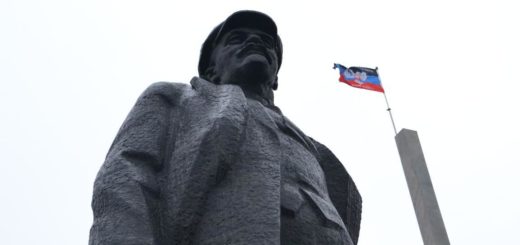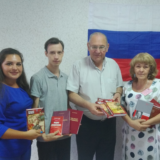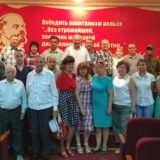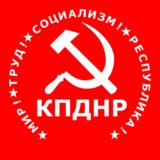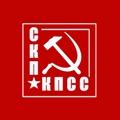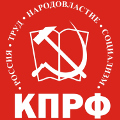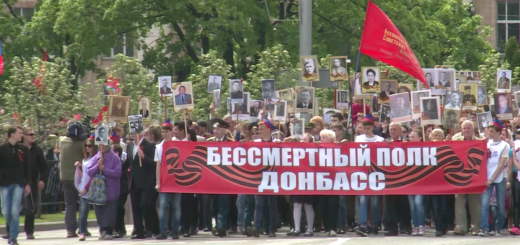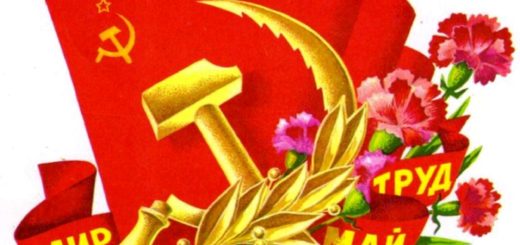With the end of the civil war in Russia, the leadership of the Bolshevik Party understood that the fate of Socialism depended upon the instigation of rapid industrialization. Beginning in 1921, the entire attention of the Soviet government was focused on restoring the ruined economy. The political and economic isolation of Soviet Russia suggested that only the peasant economy could be the source of capital investment in heavy industry. Thus, at the Tenth Congress of the RCP (B.) A new economic policy (NEP) was adopted. Its goal is to provide a link between the socialist industry and peasant farms, through the unfolding of trade between the city and the village.
In his work «On the Right Deviation in the CPSU (b)» Stalin says the following:
«What are the new forms of the link, what does this mean from the point of view of our economic policy? This means, first of all, that in addition to the old forms of the link between town and country, when industry satisfied mainly the peasant’s personal needs (cotton, shoes, general manufactory, etc.), we still need new forms of a bond when industry satisfies production needs of peasant farming (agricultural machines, tractors, improved seeds, fertilizers, etc.).»
In exchange for consumer goods and agricultural implements, the city received grain for both export and domestic consumption, as well as industrial raw materials for future production. In other words, the interaction of the two sectors was expressed in mutual demand and supply. To do this, it was necessary to allow the accumulation in private peasant farms, which would ensure the expansion of the market, the increase in the exchange of goods, the acceleration of trade between the city and the countryside.
The main issue in the industrialization process was how to ensure the formation of funds. In his report to the 21st Extraordinary Leningrad Provincial Conference of the CPSU (B.), Bukharin proposed the following:
1) Profitability of state industry;
2) Income from progressive taxation to capitalistic elements;
3) Personal savings, placed in the Soviet bank — first kulaks — and then the middle peasants.
In addition, Bukharin did not consider it necessary to interfere with the State in industry, thereby offering to develop the industry without planned capital investments. As for Russia’s agriculture, it was assumed that the necessary amount of grain would be obtained through the commercialization of the peasant economy, as well as stimulating the peasants’ consumer demand. The lack of such a policy consisted in the fact that Bukharin did not take into account the economic backwardness of the village to a proper extent, it became obvious in 1927, when the agricultural sector lagged far behind the growth of the industrial opportunities of the industry.
In general, the question of an alliance with the peasantry became the main cause of disagreements within the Party, which eventually split it into the left (Trotsky, Zinoviev, Kamenev) and the rightists (Bukharin, Rykov, Tomsky). Stalin in this issue took an inter-factional position. But if in relation to the poor and middle peasants in the politics of Stalin and Bukharin there was a generality of opinions, as a consequence, a Bukharin-Stalin bloc was created (the goal of which is the struggle with the left opposition), then the basic contradiction arose in relation to the kulak. Namely: ingrowing into Socialism or liquidation as a class.
According to official data of 1925, poor households accounted for 45% of the total, middle peasants — 51%, kulak — 4%. With regard to the stratification into the villages, Bukharin said that the nationalization of the land considerably limits this process («On the Worker and the Selkor: Articles and Speeches»). At the same time, Bukharin did not deny that the landless peasants are the rural proletariat, and, consequently, the party’s backbone in the village, and the fist opposite — the enemy («Towards the Fourteenth Congress of the CPSU (b)»). And yet the main thing that interested Bukharin was the uncertainty of the moods of the average peasantry.
As is known, Lenin spoke out for a firm alliance with the middle peasants. But for such an alliance, which would in every way strengthen the dictatorship of the proletariat, and, consequently, help the abolition of classes. Stalin, however, criticized Bukharin for allegedly distinguishing the peasantry when he described the peasantry. In fact, Bukharin spoke only about «averaging the village,» that the middle peasant became the central figure.
«The main line of our party is to attract this layer to the side of Soviet power» («On the Worker and Selkor: Articles and Speeches»).
And this task was successfully carried out, because in the late 1920’s. a mass entry of the middle peasants into the collective farm was observed.
As for the kulak, Bukharin said:
«… the basic network of our cooperative peasant organizations will consist of cooperative cells not of the kulaks, but of the» labour «type, cells that grow into the system of our state organs and thus become links in a single chain of socialist farms. On the other hand, kulak cooperative nests will, in the same way, through banks, etc., grow into the same system; but they will be, to a certain extent, an alien body, like, for example, concession enterprises «(«The Road to Socialism in Russia: Selected Works»).
Thus Bukharin tried to prove the following: since cooperation exists under the dictatorship of the proletariat, therefore, it will «grow into Socialism» just as it grows into capitalism under bourgeois power. Dependence on industry and banks leads to a direct fall under the influence of socialist economies. This theory follows from the concept of state capitalism, when the public sector absorbs smaller economies through the merger of banking and finance capital. In the end, even kulak cooperation grows into Socialism.
In practice, however, there was no growth in Socialism, but all-out resistance to it. In his work «On the Right Deviation in the CPSU (b)» Stalin writes the following:
«And they still have the opportunity to strengthen their resistance, not only because world capitalism is supporting them, but also because, despite the decline in their share, despite a decrease in their relative growth compared with the growth of Socialism, the absolute growth of capitalist elements everything happens, and this gives them a certain opportunity to accumulate forces in order to resist the growth of Socialism.»
Bukharin also tried to explain the aggravation of the class struggle, above all, by the wrong price policy and the errors of the executive bodies, and he saw the class struggle in economic competition. The war with the kulak, according to him, must not pass in order to «suppress it and close its stores», but to «produce and sell less» («Some questions of economic policy: a collection of articles»). Thus, large-scale production displaces the smaller. As a result, the market is overcome through market relations.
But already in 1927, during the so-called «grain crisis», Bukharin said that it was already possible to attack the kulaks. But he saw the offensive in the following:
1) Deprivation of the right to vote;
2) Increase of taxation;
3) Persecution for the sale of land;
4) Stricter rules for the use of employees,
5) Decrease of land rent.
In addition, the slogan «Enrich» was no longer applied to the prosperous peasantry.
In response to the proposed «offensive» model, Stalin reacted as follows:
«The author of the article mentioned forgets that it is impossible to displace the kulak class as a class with measures of taxation and any other restriction, leaving in its hands this tools of production with the right of free land use and preserving in our practice the law on hiring labour in the village, prohibition of dekulakization. The author forgets that under the policy of limiting the exploiting tendencies of the kulaks, one can count on the ousting of only a few detachments of the kulaks, which does not contradict, but, on the contrary, presupposes the preservation for the time being of the kulaks as a class. In order to oust the kulaks as a class, for this purpose there is insufficient policy of restraint and displacement of its separate detachments. In order to supersede the kulaks as a class, it is necessary to break the resistance of this class in open combat and to deprive it of productive sources of existence and development (free land use, tools of production, rent, the right to hire labour, etc.) («On the Elimination of the Fist as class»).
As a result, there were two ways out in this situation:
1) Creation of a highly productive agricultural capitalist sector;
2) Creation of large collective and state farms.
In his work The Path to Socialism in Russia: Selected Works, Bukharin recognizes the kolkhoz as a «mighty force,» but nevertheless believed that it would not be able to capture the entire peasant poor because of its petty-bourgeois individualism. And so he saw the collective farm as a distant prospect, which still has to prove its advantage over private economy.
«Collective farms are not the main highway, not a high road, not the main path by which the peasantry will go to Socialism» («Current moment and the bases of our policy»).
Hence the question arises: how will the peasantry come to Socialism? Bukharin responds: through conventional cooperation — procurement, sales, credit. Thus, he denies the path to Socialism through the process of production.
Lenin in the pamphlet «On Cooperation» had in mind all types of cooperation from the supply and marketing to the collective farms.
«Under our existing system, cooperative enterprises differ from private capitalist enterprises, as collective enterprises, but they do not differ from Socialist enterprises, if they are based on land, with the means of production owned by the state, that is, the working class.»
This was written by Lenin in 1923, when there was still no collective farm movement in the village. In 1930, in his work «Vertigo from successes,» Stalin believed that peasants could come to Socialism exclusively through the collective farm movement. And the main link in this movement should be the artel, as an association of peasants on the principles of a production cooperative.
«In the agricultural artel, the basic means of production have been socialized, mainly in the grain economy: labour, land use, machinery and other equipment, working cattle, farm buildings. It does not socialize: homestead land (small gardens, gardens), residential buildings, a certain part of dairy cattle, small animals, poultry, etc.
The artel is the main link in the collective-farm movement because it is the most expedient form of solving the grain problem. The grain problem is the main link in the entire agricultural system, because without its solution it is impossible to solve neither the problem of animal husbandry (small and large) nor the problem of technical and special crops that provide the main raw material for industry.»
All these disagreements led to the final disintegration of the Bukharin-Stalin bloc, which finally took shape during the «grain crisis». Moreover, the failure of the policy of the Comintern, the intensification of international tension caused by the aggravation of the contradictions between the various centres of imperialism, created a threat to war and the isolation of the USSR. All these factors also led to economic failures, primarily in agriculture. Talk about a war led to the fact that in the autumn of 1927 people began to intensively make purchases. This created a commodity shortage. Deprived of cheap goods, peasants sharply reduced the export of food to the market. Without reserve, the party could not send enough goods to the village. To ensure the necessary investment in heavy industry, the Soviet leadership decided to start a complete collectivization. 1929 was called Stalin’s «Year of the Great Break». It was marked by the onset of Socialism on the capitalist elements in the city and the countryside.
In Stalin’s work «Vertigo from Success» it was said that on 20th February 1929, 50% of the peasant farms were collectivized, which exceeded the standard established by the five-year plan by more than half.
With the aim of stimulating the influx of peasants to the collective farms, the Soviet government for two years exempted from taxation all Socialized working cattle on collective farms (horses, oxen, etc.), all cows, pigs, sheep and poultry, both in collective ownership of the collective farms and in the individual possession of collective farmers. Also, by the end of the year, the arrears of collective farmers on loans were deferred and all fines and foreclosures imposed on the peasants who joined the collective farms (Stalin, «Reply to Comrades to Collective Farmers») were lifted.
Simultaneously, the collective farms became the epicentre of the class struggle. Outwardly this manifested itself as the opposition of the collective economy to the kulak, who owns the means of production. And internally, in the «struggle between members of the collective farms, some of whom have not yet freed themselves from individualistic and kulak survivals and are trying to use some inequality in the collective farms to their advantage, while others are willing to expel these survivals and this inequality from the collective farms» (Stalin, agrarian policy in the USSR»).
Continuous collectivization meant an offensive on the kulak, that in 1925-1927. it was not impossible; yet there was not a wide network of state farms and collective farms on which one could rely on a decisive offensive against the kulaks. In 1927, the kulak produced more than 600 million poods of grain, and sold about 130 million poods of this amount in the order of extra-urban exchange. The offensive under such conditions could lead to the fact that the city would have remained without bread. In 1929, the production of bread on collective and state farms was no less than 400 million poods of marketable bread, more than 130 million poods.
«To attack the kulaks means to prepare for action and to strike at the kulaks, but to strike at it so that it can no longer rise to its feet. This is what we call the Bolsheviks, a real offensive. Could we take such an offensive five or three years ago with the expectation of success? No, they could not» (Ibid.).
The offensive on the kulaks through the solid collectivization of 1929-1930 also meant the curtailment of the NEP, which at that time had practically served as the link between town and country. And as Stalin correctly noted: «We do not need any connection between town and country. We need such a connection, which ensures the victory of Socialism. And if we adhere to the NEP, then it is because it serves the cause of Socialism. And when it ceases to serve the cause of Socialism, we will throw it to the devil. Lenin said that the NEP was introduced seriously and for a long time. But he never said that the NEP was introduced forever.»
Stanislav Retinsky

